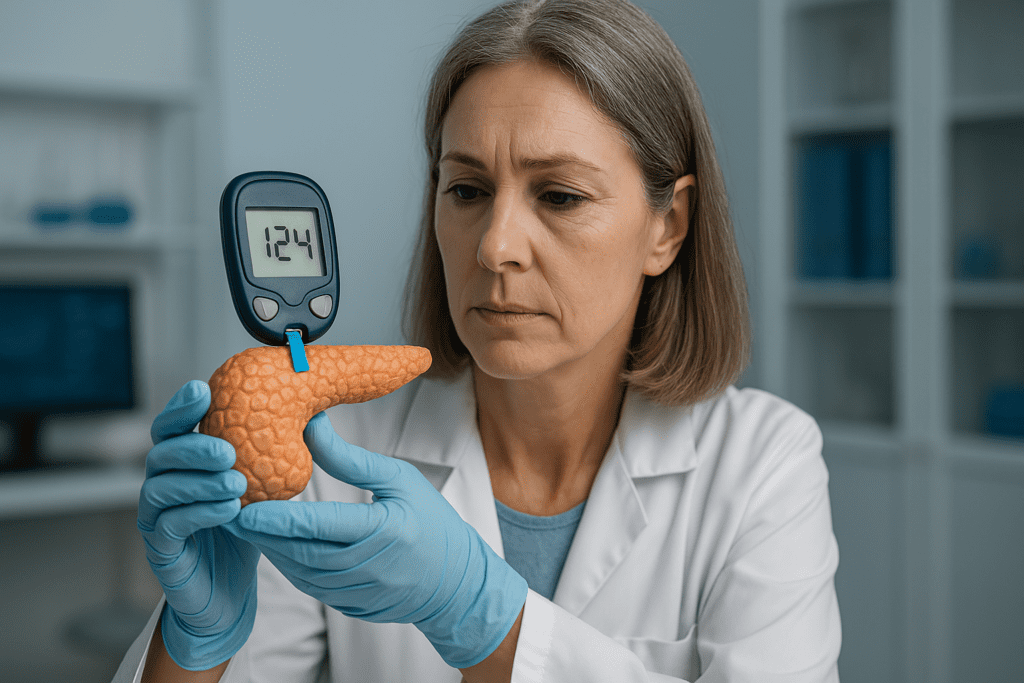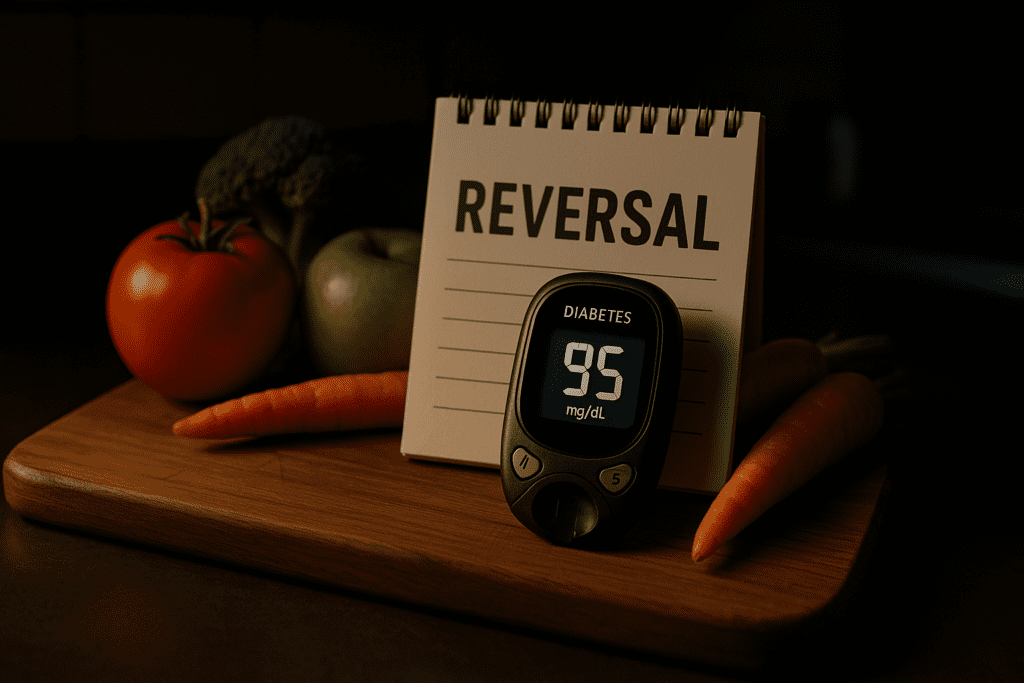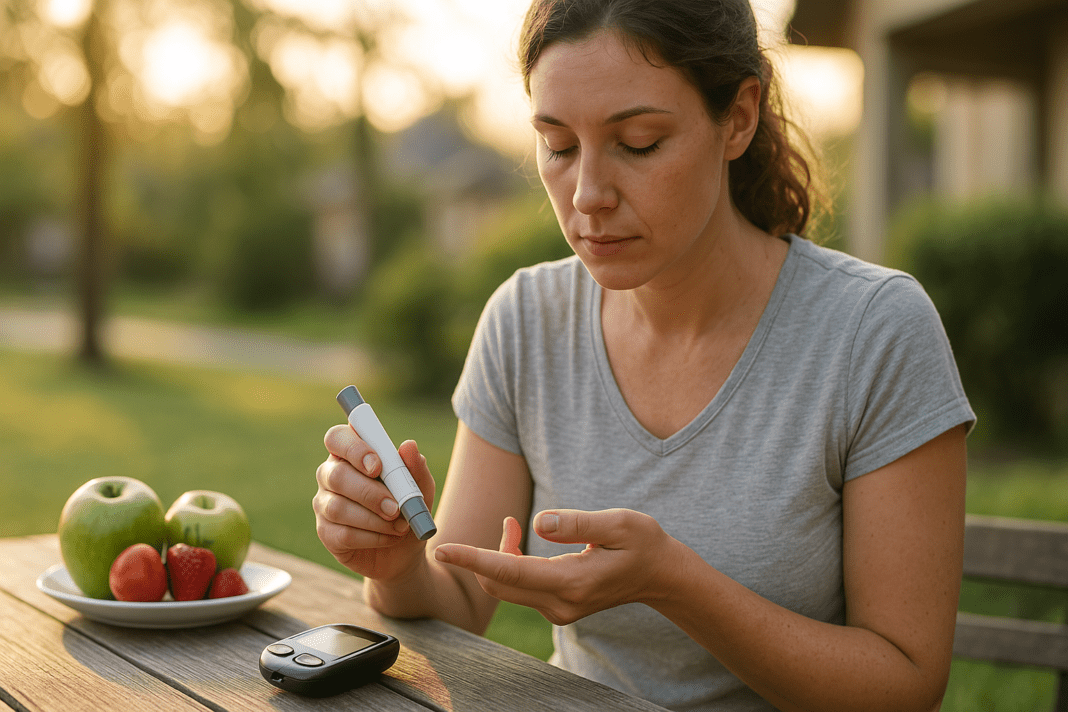Understanding the Shift: What Reversal Means in Type 2 Diabetes
For decades, type 2 diabetes was considered a lifelong, progressive disease—something to manage, not eliminate. But recent studies are challenging that assumption, revealing the potential for what researchers now refer to as the “reversed type” of diabetes. This emerging concept implies that under certain conditions, individuals with type 2 diabetes can restore normal blood sugar regulation without ongoing pharmacologic intervention. However, it’s important to distinguish between remission and a permanent cure. Diabetes reversal means that blood glucose levels return to non-diabetic ranges, but long-term lifestyle vigilance remains essential to maintain those results.
You may also like: Breakthroughs in Current Diabetes Research: What the Latest Studies Reveal About Treatment and Prevention
The shift in scientific thinking surrounding diabetes reversal is fueled by a wave of new clinical trials, nutritional studies, and metabolic research. Central to this evolving narrative is the diabetes reversal diet—structured eating patterns that aim to reduce insulin resistance, support weight loss, and reset pancreatic beta-cell function. While reversal may not be achievable for everyone, a growing body of evidence suggests that the right combination of dietary strategy, timing, and metabolic response can make remission a realistic goal.
How Long Does It Take to Reverse Diabetes? Variables That Matter
When asking how long it takes to reverse diabetes, the answer is both nuanced and deeply individual. Research suggests that some people experience marked improvements in blood sugar levels within just a few weeks of starting a targeted diet, particularly when that diet leads to rapid weight loss. However, sustainable reversal—defined by the American Diabetes Association as normal A1C levels for at least six months without glucose-lowering medications—can take several months to a year or more.
One of the most influential studies in this area is the DiRECT trial (Diabetes Remission Clinical Trial), which followed people newly diagnosed with type 2 diabetes. Participants who followed an intensive low-calorie diet of about 850 calories per day for three to five months, followed by structured food reintroduction, saw remarkable results. Nearly half achieved remission after one year, and many maintained it over two years. Notably, the majority of those who achieved remission lost at least 15 kilograms (33 pounds), highlighting the critical role of weight reduction in restoring insulin sensitivity.
Still, weight loss alone is not a guarantee. Genetics, duration of diabetes, pancreatic beta-cell function, and baseline insulin resistance all influence outcomes. Individuals with a shorter history of diabetes typically have a higher chance of achieving the reversed type, as their beta cells may retain more functional capacity. Thus, the timeline varies, and early intervention significantly increases the likelihood of successful reversal.

The Science Behind the Diabetes Reversal Diet: Key Principles and Mechanisms
At the heart of most reversal efforts is a carefully calibrated eating plan designed to lower insulin demand, reduce inflammation, and promote fat loss—particularly in the liver and pancreas. These organs are especially susceptible to fat accumulation in type 2 diabetes, impairing both insulin production and glucose regulation. Reversal diets aim to reduce ectopic fat stores, thus improving metabolic control.
Commonly studied reversal diets include low-calorie meal replacement plans, Mediterranean-style diets, ketogenic diets, and intermittent fasting protocols. Each works via different mechanisms but shares a unifying goal: to decrease insulin resistance and stabilize glucose metabolism. For example, the very low-calorie diet used in the DiRECT study creates a rapid calorie deficit that forces the body to tap into fat reserves, particularly visceral fat around internal organs. This appears to restore first-phase insulin secretion, an essential component of glycemic control.
Ketogenic diets, which are extremely low in carbohydrates and high in fat, operate by minimizing glucose availability and prompting the body to shift to ketone-based energy metabolism. While controversial in some circles due to long-term sustainability concerns, short-term data indicate that ketogenic approaches can lead to substantial improvements in glycemic markers. Intermittent fasting, on the other hand, enhances insulin sensitivity and stimulates autophagy—cellular housekeeping processes that may improve metabolic efficiency.
Evidence from Clinical Studies: Reversal Is Possible, But Not Guaranteed
Several landmark clinical studies support the concept of diabetes reversal through dietary intervention. In addition to the DiRECT trial, the Look AHEAD (Action for Health in Diabetes) study offered insights into the effects of intensive lifestyle modification on metabolic outcomes. While this study did not focus exclusively on reversal, participants in the intervention group saw notable improvements in glycemic control, cardiovascular markers, and weight—all of which contribute to remission potential.
Smaller trials and pilot studies have explored alternate strategies such as plant-based diets, time-restricted eating, and individualized nutritional counseling. In one randomized study published in BMJ Nutrition, a whole-food, plant-based diet led to significant reductions in insulin resistance and A1C levels in just 16 weeks. These changes were correlated with reduced intrahepatic fat and enhanced insulin receptor function.
It’s worth noting that even when dietary efforts fall short of full reversal, they can significantly reduce medication needs and improve quality of life. The benefits extend beyond blood sugar to encompass cholesterol levels, blood pressure, inflammation, and even mental well-being. Thus, while the goal may be reversal, the journey itself often yields profound health benefits.
The Role of Timing: Why Early Intervention Is Critical
One of the most consistent findings across studies is that early intervention dramatically improves the odds of reversing type 2 diabetes. People who begin a reversal-focused approach within the first few years of diagnosis tend to respond more favorably than those who wait. This is likely due to the gradual decline of pancreatic beta-cell function over time; once a certain threshold of damage is crossed, functional recovery becomes less feasible.
In practical terms, this means that individuals newly diagnosed with type 2 diabetes should be encouraged to explore intensive dietary and lifestyle changes as a frontline strategy. Waiting for medical therapy to fail or for complications to arise reduces the window of opportunity. Healthcare providers increasingly recognize the need to present the diabetes reversal diet as a viable first option rather than a last resort.
Further, the pace at which reversal occurs may be accelerated when lifestyle changes are implemented aggressively at diagnosis. This may involve coordinated support from dietitians, diabetes educators, and behavioral therapists to ensure adherence and address emotional eating or psychological barriers. The timing of dietary intervention, therefore, influences not just speed but overall success.

What Defines the Reversed Type: Clinical Parameters and Diagnostic Criteria
The term “reversed type” is not yet an official medical classification, but it is gaining traction in both scientific literature and clinical practice. Generally, the designation refers to individuals who no longer meet diagnostic criteria for diabetes—specifically, those who achieve an A1C below 6.5%, maintain fasting glucose levels below 126 mg/dL, and no longer require diabetes medications. Crucially, these improvements must persist for at least six months without pharmacologic support to qualify as genuine remission.
Some endocrinologists prefer the term “remission” to underscore the fact that the underlying predisposition remains. However, the concept of reversed type captures a powerful narrative of physiological transformation and offers hope for those motivated to reclaim metabolic health. By reducing visceral fat, restoring insulin secretion, and improving receptor sensitivity, people with type 2 diabetes can transition to a state of functional normalcy, even if vigilance remains necessary.
There is ongoing debate regarding how best to define and track remission. Should it be measured strictly by blood markers, or should it include quality-of-life indicators and functional metrics? What role do glucose tolerance tests play in assessing durability? These questions are the subject of ongoing research and underscore the need for standardized diagnostic frameworks.
Barriers to Reversal: Biological, Social, and Economic Hurdles
Despite the promise of the diabetes reversal diet, significant barriers remain. Biologically, some individuals have more entrenched insulin resistance or irreversible beta-cell damage, limiting their capacity for metabolic recovery. Others may experience weight loss resistance due to hormonal imbalances, medications, or genetic predisposition.
Social and economic factors also play a substantial role. Access to nutritious food, time for meal preparation, support systems, and medical care all influence outcomes. For many individuals living in food deserts or working multiple jobs, implementing a structured diet is a logistical challenge. Additionally, cultural eating patterns and psychological relationships with food must be addressed for dietary changes to be sustainable.
The healthcare system itself often prioritizes pharmacological management over lifestyle education, leaving patients under-informed about the possibilities of remission. Insurance coverage for dietitians and health coaching is inconsistent, and many patients lack access to continuous glucose monitoring or metabolic testing. Addressing these systemic issues is essential to making reversal more widely achievable.
Sustainability of Remission: Preventing Relapse After Reversal
Achieving the reversed type is a significant milestone, but maintaining it presents its own set of challenges. Relapse into hyperglycemia can occur if dietary discipline wanes, weight is regained, or physical activity diminishes. This reality underscores the importance of long-term behavior change and continuous monitoring.
Studies suggest that those who maintain remission adopt sustainable habits rather than temporary fixes. Regular exercise, mindful eating, sleep hygiene, and stress management are all crucial components of long-term metabolic health. Importantly, individuals must continue to engage with their healthcare team even after remission is achieved to monitor for any signs of relapse.
Some experts advocate for a graduated reintroduction of carbohydrates or calories under medical supervision. This allows the individual to transition from an intensive diabetes reversal diet to a more balanced, maintainable eating pattern without compromising glycemic control. The goal is to evolve from restriction to intuition—using a deepened awareness of one’s metabolic response to guide food choices.

Frequently Asked Questions: Diabetes Reversal Diet and the Reversed Type
1. Can someone with long-standing type 2 diabetes still benefit from a diabetes reversal diet?
Yes, even those with long-term type 2 diabetes may see improvements from a structured diabetes reversal diet, although full remission might be less likely. While the chances of achieving the reversed type are higher in people recently diagnosed, individuals with longer histories can still reduce insulin resistance and improve metabolic markers through consistent dietary changes. Key adaptations may involve emphasizing anti-inflammatory foods, focusing on nutrient timing, and incorporating time-restricted eating to optimize insulin sensitivity. Additionally, personalized nutrition based on genomic and microbiome data is emerging as a promising tool for those who haven’t responded well to conventional interventions. The success of a diabetes reversal diet in this group depends on persistence, medical oversight, and realistic expectations regarding how far glucose levels can be improved.
2. How does gut health influence the potential for diabetes reversal?
Gut health plays a critical, often overlooked role in the success of a diabetes reversal diet. The diversity and balance of the gut microbiome influence insulin sensitivity, inflammation levels, and the body’s metabolic response to nutrients. Emerging research suggests that certain strains of gut bacteria may either support or inhibit efforts to achieve the reversed type. Probiotic-rich foods and prebiotic fibers can enhance microbial diversity, potentially aiding in blood sugar control. While more research is needed, optimizing gut health is increasingly considered a foundational strategy alongside macronutrient control when evaluating how long does it take to reverse diabetes in a given individual.
3. Are there psychological factors that affect the likelihood of achieving the reversed type?
Absolutely. Mental and emotional health significantly influence outcomes for individuals attempting to reach the reversed type through lifestyle interventions. Stress increases cortisol levels, which can worsen insulin resistance and make a diabetes reversal diet less effective. Additionally, emotional eating, food insecurity, and lack of social support can all undermine adherence to dietary protocols. Cognitive behavioral therapy (CBT), mindfulness-based stress reduction (MBSR), and structured health coaching have been shown to improve outcomes when combined with nutritional efforts. These interventions help individuals overcome psychological barriers that may otherwise delay or prevent reversal, regardless of how long does it take to reverse diabetes from a biological standpoint.
4. Is physical activity always necessary for diabetes reversal, or can diet alone be sufficient?
While diet is the primary driver of glycemic changes, physical activity is a powerful adjunct that can accelerate progress toward the reversed type. Exercise enhances glucose uptake by muscles independently of insulin, which is especially beneficial for those with severe insulin resistance. Some individuals may achieve significant improvements with diet alone, but including regular activity often shortens the timeline for results. In clinical practice, those who engage in moderate to vigorous exercise at least four times per week tend to reach reversal milestones faster. Therefore, if someone is asking how long does it take to reverse diabetes, the answer often hinges on whether their plan includes consistent movement.
5. Can intermittent fasting be used as part of a diabetes reversal diet safely?
Yes, when properly supervised, intermittent fasting can be a safe and effective component of a diabetes reversal diet. It works by reducing insulin levels for extended periods, allowing the body to burn fat more efficiently and improve insulin sensitivity. However, fasting protocols must be personalized to avoid hypoglycemia, especially for those on glucose-lowering medications. Individuals pursuing the reversed type through intermittent fasting may find that they reach metabolic goals more quickly than those using calorie restriction alone. That said, medical supervision is crucial to adjust medications and ensure safety, particularly in the early stages of dietary transition.
6. How do cultural food practices influence the success of diabetes reversal diets?
Cultural food preferences can significantly impact the feasibility and sustainability of any diabetes reversal diet. A one-size-fits-all approach often fails because it overlooks deeply ingrained habits, communal eating customs, and emotional ties to certain foods. To increase the likelihood of achieving the reversed type, nutritional strategies must be culturally tailored. For instance, Mediterranean diets may work well in Western populations, but traditional Asian or African diets rich in plant-based foods and spices can also support reversal. Health practitioners should focus on modifying portion sizes, cooking methods, and meal timing rather than eliminating culturally significant foods altogether. This personalized, respectful approach improves adherence and enhances the likelihood of sustained success—especially when considering how long does it take to reverse diabetes across different populations.
7. What role do sleep and circadian rhythms play in diabetes reversal?
Emerging research suggests that circadian biology is deeply intertwined with metabolic health and the success of reversal efforts. Sleep deprivation and irregular sleep-wake cycles can increase insulin resistance, sabotage appetite regulation, and impair glucose tolerance. For individuals working night shifts or suffering from chronic insomnia, reaching the reversed type may require more intensive interventions to align circadian rhythms. Optimizing sleep hygiene, using blue light filters in the evening, and maintaining consistent meal and bedtime schedules all support the effectiveness of a diabetes reversal diet. Therefore, addressing circadian alignment may be a missing puzzle piece for those struggling to understand how long does it take to reverse diabetes despite following all other guidelines.
8. Can diabetes be reversed without significant weight loss?
Although weight loss is often a key driver of reversal, there are documented cases where people achieve the reversed type without dramatic weight changes. This is particularly relevant for individuals with normal-weight or lean type 2 diabetes, where insulin resistance is driven more by visceral fat or hepatic lipid accumulation than by total body weight. In such cases, a diabetes reversal diet may focus more on liver detoxification pathways, reducing refined carbohydrates, and controlling meal timing. Advanced imaging techniques can now measure reductions in organ-specific fat deposits even in the absence of visible weight loss. So when evaluating how long does it take to reverse diabetes, it’s essential to consider internal metabolic changes, not just what the scale shows.
9. Are there biomarkers that can predict who will achieve the reversed type?
Yes, researchers are increasingly identifying biomarkers that can help predict the likelihood of successful reversal. These include fasting insulin levels, C-peptide concentrations, beta-cell function scores, and markers of hepatic fat accumulation. Individuals with preserved insulin production capacity and low intrahepatic fat tend to respond better to a diabetes reversal diet. Genetic markers and gut microbiome profiles are also being explored as predictive tools. In the future, personalized algorithms that incorporate these biomarkers may more accurately forecast how long does it take to reverse diabetes for a given individual, making treatment more precise and efficient.
10. What are some future directions in diabetes reversal research?
The field of diabetes reversal is evolving rapidly, with future research focusing on precision nutrition, digital health tools, and metabolic phenotyping. Innovations like continuous glucose monitors (CGMs) and AI-powered meal planning apps are already helping individuals fine-tune their diabetes reversal diet in real time. Researchers are also exploring the therapeutic potential of metabolomics and epigenetics to better understand what distinguishes a sustainable reversed type from a temporary remission. Longitudinal studies are underway to identify which behavioral and physiological factors most strongly predict long-term success. These advancements will not only shorten the answer to how long does it take to reverse diabetes but also improve outcomes for diverse populations with varying health profiles.
Conclusion: What Science Says About the Diabetes Reversal Diet and the Path to a Reversed Type
The growing body of research on diabetes reversal diets offers a hopeful and empowering message: type 2 diabetes is not necessarily a permanent condition. Through structured, evidence-based dietary interventions, many individuals can achieve the reversed type—restoring normal blood sugar control and reducing or eliminating the need for medication. However, this journey requires more than dietary change; it demands early intervention, sustained lifestyle adjustments, and support from both healthcare providers and broader social systems.
For those wondering how long it takes to reverse diabetes, the answer lies in a personalized matrix of biology, commitment, and environmental factors. While some may reach remission in a matter of months, others may require a year or more. What matters most is that reversal is possible—and increasingly recognized as a realistic outcome by the scientific and medical communities.
As we look to the future, expanding access to personalized nutrition support, metabolic monitoring, and public health education will be essential. With continued research, the goal of widespread diabetes remission may shift from a hopeful aspiration to a standard of care, redefining what it means to live with—and beyond—type 2 diabetes.
type 2 diabetes remission, reversing insulin resistance, metabolic health improvement, low glycemic diet, diabetes-friendly nutrition, blood sugar stabilization, insulin sensitivity recovery, glucose metabolism support, pancreatic function restoration, diabetes diet strategies, non-pharmacologic diabetes treatment, nutritional therapy for diabetes, lifestyle changes for diabetes, early intervention in diabetes, weight loss and diabetes control, managing blood glucose naturally, fat loss for insulin health, circadian rhythm and metabolism, personalized diabetes care, plant-based diabetic diets
Further Reading:
How long may it take to achieve type 2 diabetes remission?
Reversal of type 2 diabetes mellitus through integrated Ayurveda dietary protocol – A case report
Reversal and Remission of T2DM – An Update for Practitioners
Disclaimer
The information contained in this article is provided for general informational purposes only and is not intended to serve as medical, legal, or professional advice. While MedNewsPedia strives to present accurate, up-to-date, and reliable content, no warranty or guarantee, expressed or implied, is made regarding the completeness, accuracy, or adequacy of the information provided. Readers are strongly advised to seek the guidance of a qualified healthcare provider or other relevant professionals before acting on any information contained in this article. MedNewsPedia, its authors, editors, and contributors expressly disclaim any liability for any damages, losses, or consequences arising directly or indirectly from the use, interpretation, or reliance on any information presented herein. The views and opinions expressed in this article are those of the author(s) and do not necessarily reflect the official policies or positions of MedNewsPedia.


